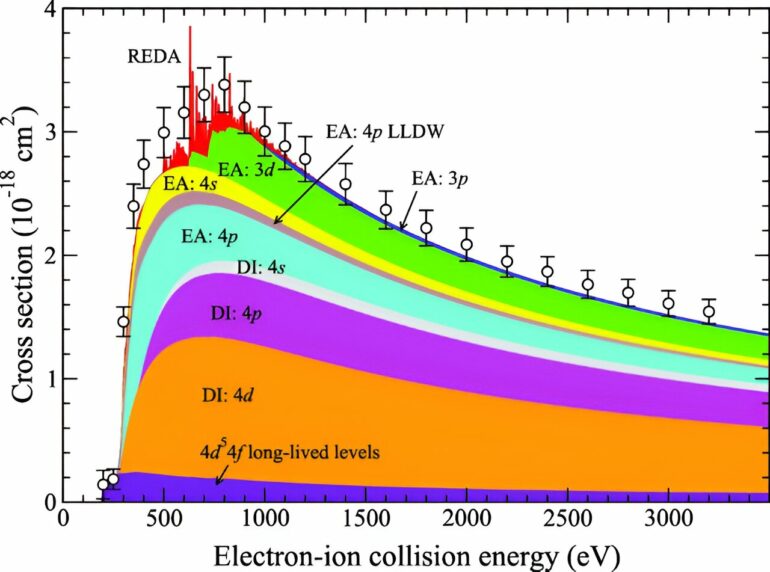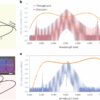During electron-impact ionization (EII), high-energy electrons collide with atoms, knocking away one or more of their outer electrons. To calculate the probability that ionization will occur during these impacts, researchers use a quantity named the “ionization cross-section.” EII is among the main processes affecting the balance of charges in hot plasma, but so far, its cross-section has proven incredibly difficult to study through theoretical calculations.
Through new research published in The European Physical Journal D, Stefan Schippers and colleagues at Justus-Liebig University of Giessen, Germany, present new calculations for the EII cross-section, which closely match with their experimental results. Their discoveries could provide useful new insights in many fields of research where hot plasma is studied, including astrophysics and controlled nuclear fusion.
So far, EII cross-sections have proven especially challenging to calculate for two key reasons: the complex interactions that can emerge between the electrons involved in the process, and the wide array of possible electron configurations in the atoms being impacted.
In their study, Schippers’s team tackled these challenges by accounting for several important aspects of the EII process in their calculations: including the relativistic properties of fast-moving electrons, and quantum-scale interactions between electrons and ions. Rather than focusing on the individual electron configurations of the atoms being impacted, they also considered the average effect of many different electronic configurations.
The researchers tested their approach by calculating both the single- and double-EII cross-sections of multiply charged xenon ions, across a broad range of collision energies. They then compared these theoretical values with real experimental results.
In most cases, their theoretical cross-sections agreed closely with their experiments—only becoming less accurate at lower collision energies, on the threshold of where ionization can occur. Based on this success, Schippers and colleagues now hope their approach could offer important guidance for EII cross-section calculations in future studies.
More information:
Fengtao Jin et al, Experimental and theoretical total cross sections for single and double ionization of the open-4d-shell ions Xe12+, Xe13+, and Xe14+ by electron impact, The European Physical Journal D (2024). DOI: 10.1140/epjd/s10053-024-00854-2
Citation:
New calculation approach allows more accurate predictions of how atoms ionize when impacted by high-energy electrons (2024, June 26)



